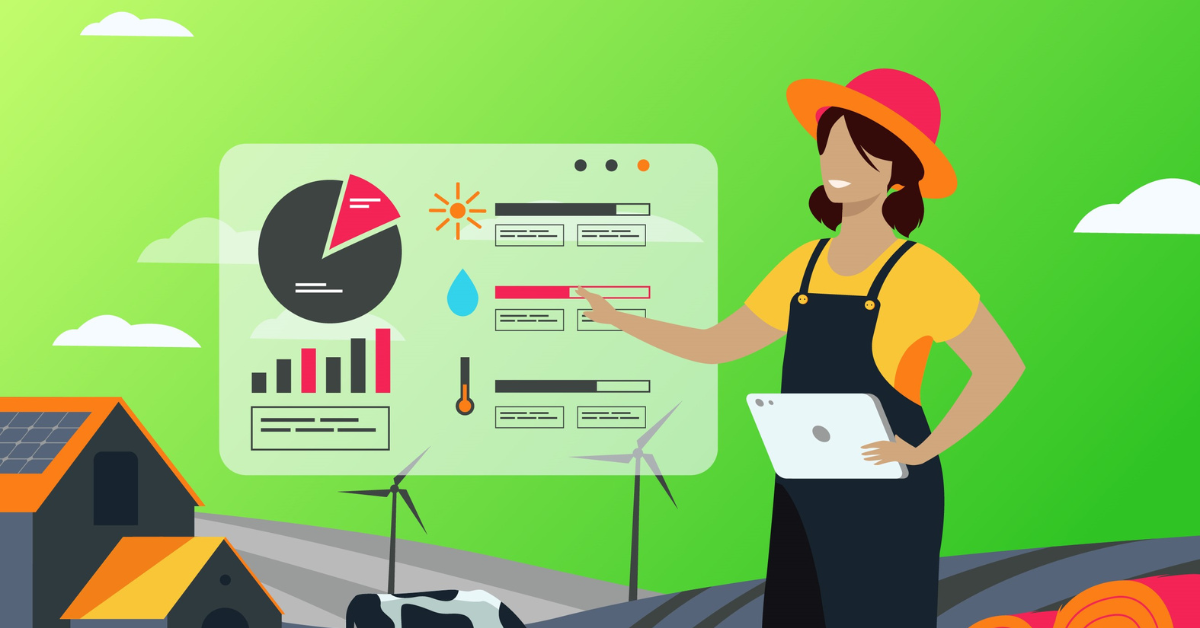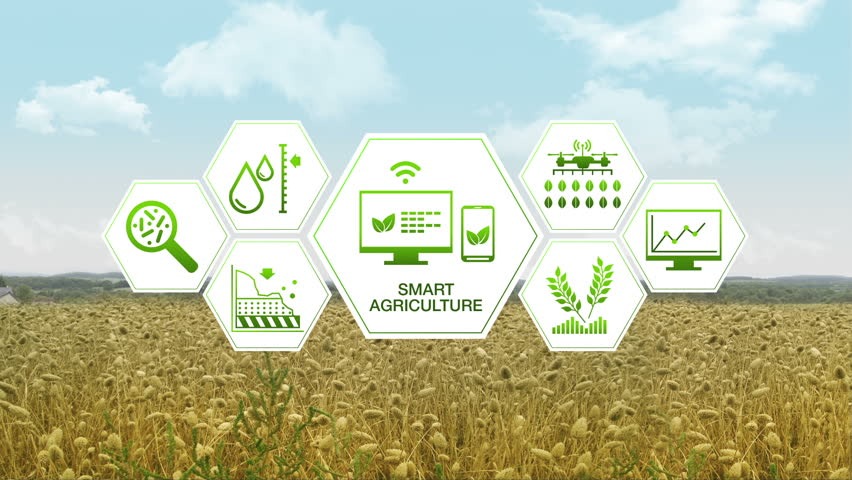Contact: +91 99725 24322 |
Menu
Menu
Quick summary: Discover how data-driven agriculture is revolutionizing the farming landscape for smallholder farmers. Explore the benefits, challenges, and innovative solutions that empower farmers to make informed decisions and drive sustainable agricultural practices.

In the face of global challenges such as climate change, food security and poverty, smallholder farmers play a crucial role in ensuring sustainable agriculture and feeding the world’s growing population. However, these farmers often face numerous hurdles, including limited access to resources, knowledge and technology. Data driven agriculture leverages the power of information and technology and empowers smallholder farmers to drive positive change in their livelihoods.
According to the World Bank, smallholder farmers produce about 80% of the food consumed in many developing countries.
In this blog post, we will explore the transformative potential of data driven agriculture, the challenges, benefits it brings to smallholder farmers and the innovative solutions that are making a difference in their lives. Join us on this journey to discover how data driven agriculture is revolutionizing farming practices and paving way for a more sustainable future.
For smallholder farmers, data-driven agriculture is essential since it provides them with critical information to maximize their productivity and sustainability. Farmers may choose the best crops for irrigation, fertilization, pest management, and market trends by gathering and analyzing data on weather patterns, soil characteristics, crop health, and market trends. They can maximize yields, minimize resource waste, cut costs, and increase profitability as a result. Furthermore, data-driven agriculture encourages precision farming, effective resource management, and better risk management, ultimately enhancing the livelihoods and resilience of smallholder farmers.
Utilizing insights obtained from data analysis, data-driven initiatives increase production, efficiency, and profitability in agriculture. Farmers can improve their farming practices by tracking and evaluating elements including weather patterns, soil quality, and crop health. This involves targeted pest and disease management, precise crop selection, irrigation, and fertilization. Farmers may decrease resource waste, optimize resource allocation, boost yields, and enhance overall efficiency by making data-driven decisions. This improves production and profitability, which ultimately helps the agricultural industry and farmers’ livelihoods.
Agriculture that is “data-driven” makes use of technology, data analysis, and data collection to improve farming methods. It has the potential to boost agricultural production, profitability, and sustainability through advantages like enhanced crop yields, resource efficiency, risk management, and informed decision-making.
Weather data: For smallholder farmers to make educated decisions about irrigation, planting dates, and crop management, they need information on temperature, rainfall, humidity, and other meteorological characteristics.
Soil data: Farmers are assisted in choosing the best fertilization, soil amendments, and soil conservation techniques for their crops by data on soil properties, such as nutrient levels, pH, organic matter content, and soil texture.
Market data: Smallholder farmers may choose crops wisely, decide when to harvest them, and develop effective marketing plans thanks to access to market information, such as prices, demand trends, and consumer preferences.
In today’s complicated and data-driven environment, data collection, management, and analysis are essential for efficient decision-making. They give decision-makers the knowledge and understanding they need to make wise decisions, allocate resources efficiently, and manage risks. Decision-makers can spot patterns, trends, and correlations that might otherwise go undetected by gathering pertinent data, organizing it through effective management systems, and analyzing it with cutting-edge methods. As a result, they are better able to comprehend the situation as it is, forecast future events, weigh their options, and decide on the best course of action. Making decisions based on data improves effectiveness, profitability, and outcomes across industries and sectors.

Precision irrigation and fertilization are made possible in agriculture by the use of sensors and satellite photography. Real-time information on crop health, weather, and soil moisture is provided by sensors, while extensive field insights are provided by satellite photography. This information aids in resource efficiency, crop health improvement, and production improvement.
Utilizing technology and data-driven methods, smart farming practices optimize resource use and lower waste in agriculture. This includes automated systems for effective resource allocation, targeted fertilization, real-time crop health monitoring, and precision irrigation. Smart farming encourages resource-aware and sustainable practices by reducing waste and increasing efficiency.
Making informed judgments on crop selection and planting is made easier with the use of historical data and predictive analytics. Predictive analytics is the process of predicting future events by examining past market trends, weather patterns, and crop performance. Farmers can then choose the best crops to grow and arrange their planting for maximum yields and market demand.
The monitoring of crop health and pest management in agriculture is made possible by data-driven techniques. Farmers can identify potential problems early on by gathering information on plant growth, insect prevalence, and disease symptoms. For increased yields and decreased losses, crop health is maintained, pest control tactics are optimized, and timely interventions are implemented thanks to data analysis.
Farmers are better able to make educated pricing and market decisions when they have access to real-time market information. Farmers can improve profitability and market competitiveness by adjusting their pricing strategies, identifying market opportunities, and making educated decisions about product timing, quantities, and marketing channels by keeping up with market trends, demand-supply dynamics, and competitor pricing.
For farmers, value chain optimization and direct market access are made possible through integration into digital platforms. Farmers can communicate with buyers directly by utilizing e-commerce platforms, internet marketplaces, or mobile applications, cutting out middlemen. This makes it possible to manage the supply chain effectively, set fair prices, and increase market transparency, all of which boost smallholder farmers’ profitability and access to markets.
Utilizing climate data enhances agriculture’s resilience to the effects of climate change. Farmers may predict changes in weather patterns, adapt cropping systems, put climate-smart practices into place, and adopt robust crop types by analyzing historical and current climate data. In the face of shifting climatic conditions, this helps them to reduce risks, maximize resource consumption, and improve agricultural productivity.
Farmers can use early warning systems and data-driven insurance options as effective risk management tools. These systems can provide early warnings of potential dangers by analyzing weather, crop health, and other pertinent data. This enables farmers to take preventative measures and receive insurance coverage for losses.
Data privacy and security concerns: Concerns about security and privacy are raised by the collection and management of agricultural data. Farmers should be in charge of their data, and suitable precautions must be taken to protect it from misuse or unauthorized access.
Infrastructure and connectivity limitations in rural areas: Limited infrastructure and connectivity in isolated or rural places might make it difficult to gather, transmit, and analyze data. It could be necessary to use creative solutions like offline data collecting and low-bandwidth applications.
Ensuring inclusivity and addressing the digital divide: The digital divide must be closed for data-driven agriculture to be inclusive. To close the gap and make sure that everyone has access to data-driven solutions, efforts should be made to give smallholder farmers technology, internet connectivity, and training.
TraceX, the blockchain powered traceability platform, goes beyond traditional traceability solutions to offer sustainability and carbon management features. By leveraging its advance technology, TraceX enables data driven agriculture for smallholder farmers, empowering them to make informed decisions and drive positive change. Trace Gro, the farm management software enables farmers to collect and analyse data on various aspects of their farming practices, including inputs, crop growth and environmental impact. This data driven approach helps farmers optimize their resource usage, enhance productivity and reduce environmental footprint. By providing real-time insights and actionable recommendations, the solution empowers smallholder farmers to implement sustainable practices, improve their livelihoods and contribute to a more sustainable future.
Conclusion:
In conclusion, smallholder farmers have a lot to gain from data-driven agriculture. Farmers may improve decision-making, resource efficiency, productivity, and resistance to problems like climate change and market volatility by utilizing data collection, management, and analysis. To guarantee broad and successful adoption, however, issues with technology access, data protection, building capability, and affordability must be resolved. Data-driven agriculture may alter smallholder farming and create sustainable and successful agricultural systems with the correct assistance and cooperation.
